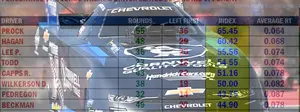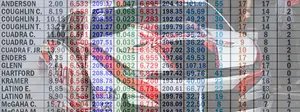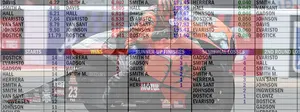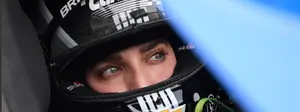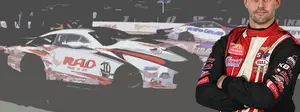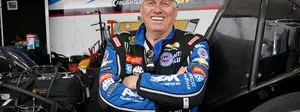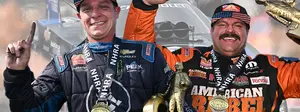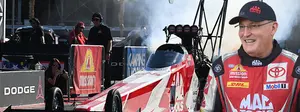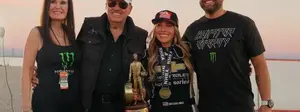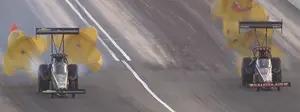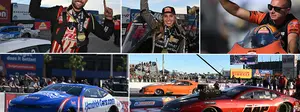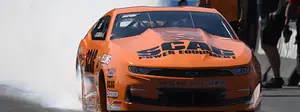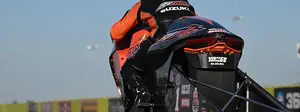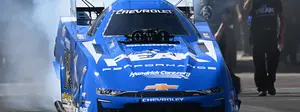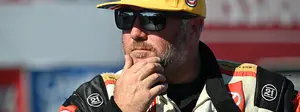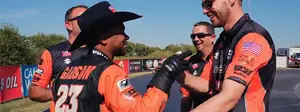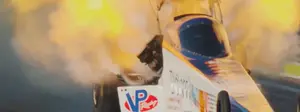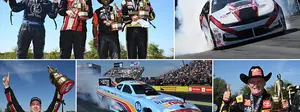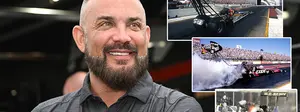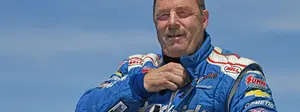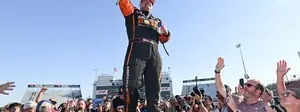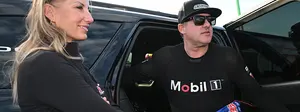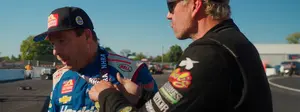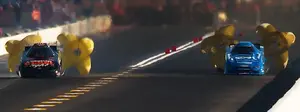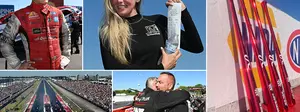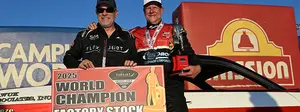

Five things we learned at the Menards NHRA Nationals Presented By PetArmor
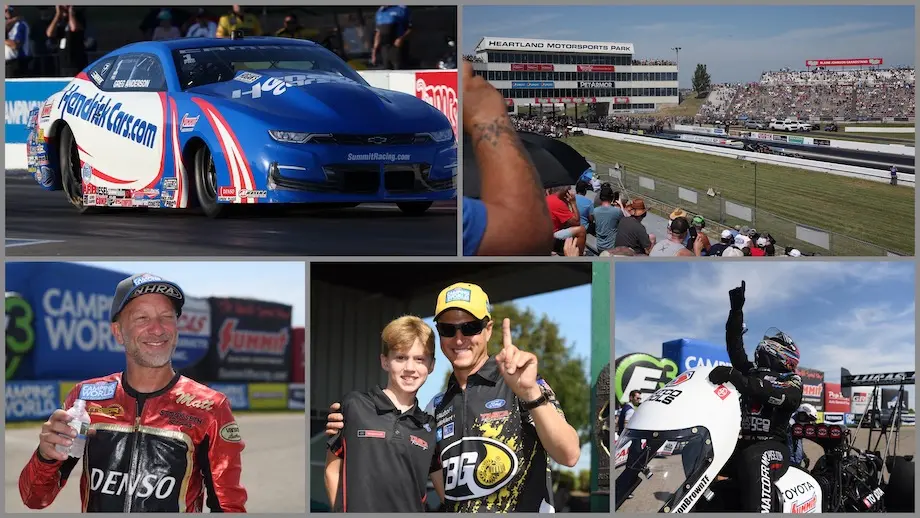
1. Antron Brown’s car is 70% new. At first look, it seems like the AB Motorsports team has the same Don Schumacher (DSR) dragster chassis, the same DSR Top Fuel engine, and the same team Brown's had backing him for years — as he did in 2016 when he won his last championship. But that’s not the case. It turns out that while Brown is running the same DSR chassis he is experienced with, the engine program is backed by a whole new CNC Performance Engineering clutch setup, the engine has a new DMPE supercharger, and the familiar Matco Tools and Toyota logos are now wrapped around a John Force Racing-enclosed canopy body. Brown figures the car is 70% new, and there’s been a steeper learning curve than one might suspect.
2. Greg Anderson's shocks weren’t right when he made his quickest pass in Topeka. This is a conflicting one. On a modern Pro Stock Camaro, the shocks use of a combination of coil springs and air pressure to create a variable spring rate for the suspension going down the track. The theory is that you want one suspension characteristic at the launch, and then you want the car to be softer sprung going down a quarter-mile. During Greg Anderson‘s Friday afternoon qualifying session, the timers that bleed the air pressure off and reduce the spring rate never went off, so theoretically, the suspension stayed stiff the entire time. Anderson's 6.623 e.t. suggests the car liked that suspension curve better than what it was intended to be and was one of those moments where Anderson humbly discussed his mistake as a learning opportunity. He said he never questions how hard he works but that he still doesn’t always work smart enough. And then when he makes a mistake that works in his favor ... it's back to the drawing board. Keep this in mind if you find yourself asking, "Why hasn't Anderson reached 100 wins yet?" Just because he makes it look easy doesn’t mean that it is.
3. Topeka’s House of Speed can handle the heat. Heat makes for great racing. It may be the worst thing for making horsepower, but fans and viewers of this weekend‘s race saw how the high air temps forced drivers and tuners to focus on optimizing their capabilities instead of searching for more horsepower to cover up for their inefficiencies. While writers like us love the headlines that come from record runs and new speed achievements, the Topeka track showed us that great racing can happen at any horsepower level. In fact, looking at the margins of victory in each round suggests hot weather races with great track conditions like we saw in Topeka make for some of the best racing a spectator can see.
4. Bob Tasca III lost 7 pounds coming into Topeka. No one would ever accuse Tasca of being overweight, but as we have seen in his quest for success with his Ford Funny Car program, he’ll leave no stone unturned in finding the success his team is capable of. After qualifying No. 1 in Topeka, Tasca explained that he is an extremely competitive person, even with himself. He said he normally eats a vegan-like diet with a little bit of fish from time to time. But since the Western Swing, he's challenged himself to remove bread, dairy, and carbs from his diet. The efforts allowed him to drop seven more pounds from his already fit frame. Although Funny Cars have enough power to overcome any body mass, we concede there is no such thing as a fat cheetah.
5. Matt Smith can ride anything. In 2022, Matt Smith Racing is a three-bike team campaigning two very different style motorcycles. The V-Vwin Buell that he won his fifth Pro Stock Motorcycle championship on in 2021 (and that his wife Angie is riding in 2022) and a new four-valve Suzuki that he is developing and racing with Jianna Evaristo (formerly Jianna Salinas). In Houston, Smith made it to the finals with his Suzuki, but a mechanical failure meant he had to switch back to the V-Twin Buell to take on Steve Johnson in the final. The Buell was no match for Johnson's Suzuki, though Smith's reaction time certainly was. Then in Denver, Smith ran the whole race on the V-Twin and won.
In Topeka, once again, Smith's Suzuki that he qualified on expired before race day, and Smith elected to bring back the Buell instead of an all-night wrench on the Suzuki. Now, the whole premise of qualifying is not only to establish your position amongst the competition but also to familiarize yourself with your equipment and the track. Clearly, Smith knew this going into a Houston final rematch against Johnson — but this time, the first-round win went to Smith. While the Buell fell in the next round to Eddie Krawiec, Smith’s success with multiple machines in the same weekend was proven.























